Trading strategy Parabolic on moving averages.
Using the Parabolic Sar indicator in any Forex trading strategy always solves many problems that so often arise when drawing up your own work scheme.
arise when drawing up your own work scheme.
Indeed, it’s not for nothing that many traders call the Parabolic indicator a trend guide, because using it you will never go against the market, and you will also have fewer problems with setting stop orders.
Due to its multitasking and functionality, it is used in various trading strategies and advisors. Today I will introduce you to one of these trading strategies.
The Parabolic trading strategy on moving averages is trend-based, and is based on standard technical indicators of the Meta Trader 4 trading platform. This system is used on the euro/dollar, pound/dollar currency pairs, as well as on everyone’s favorite gold.
Since the strategy consists of standard indicators, there is no need to install third-party files other than the template. In your terminal, go to the indicators section and plot three exponential moving averages of different colors with a period of 10, 25 and 50.
You also need to apply the Parabolic Sar and MACD with default settings. If you are too lazy to do this, you can install the template in the Template folder, and then select “Parabolic on Moving Averages” from the list of your templates. After launching the template (you can download it at the end of the article), your work schedule will look like this:
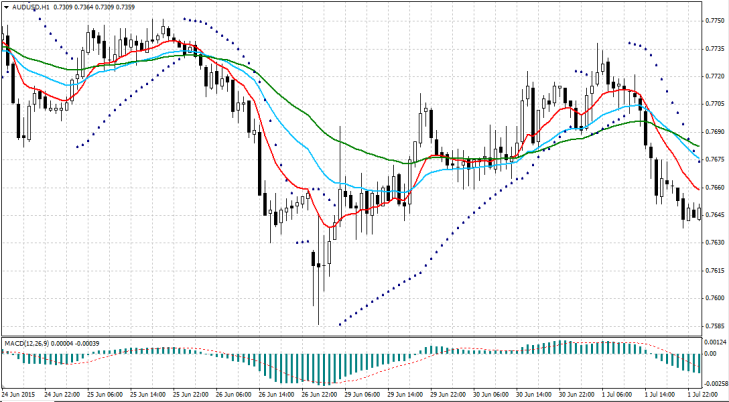
The core of this strategy is three standard indicators, namely Parabolic SAR, MACD and Moving Average. In essence, we have a completely balanced trading strategy based on two trend indicators and one oscillator. Three moving averages perform a signal function, that is, they give an entry signal at their intersection. MACD and Parabolic act as a trend filter, as well as setting stop orders. Now let’s move on from the essence of the strategy to its signals.
We enter a buy position while simultaneously meeting the following conditions:
1. A moving average with a period of 10 intercepts moving averages with a period of 25 and 50 from bottom to top. (The red line crosses the blue and green lines from bottom to top).
2. The Parabolic indicator point is located below the price.
3. The histogram of the MACD indicator is above level 0.
Entry into a position occurs strictly on a closed bar. An example of entering a position is shown in the picture below:
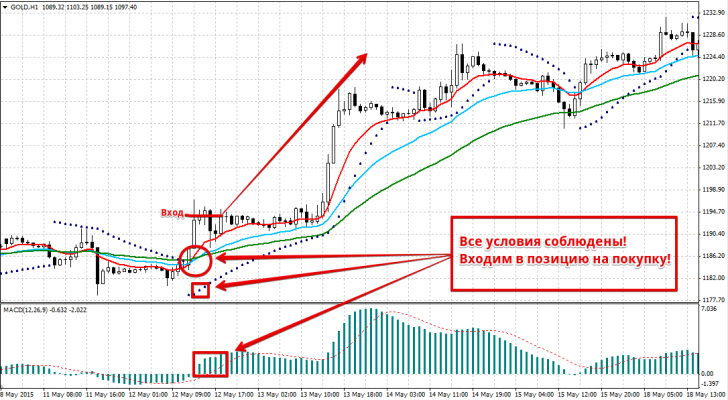
If you missed the main signal or just want to add to a buy position, then an additional signal occurs when:
1. The price approached the moving average with a period of 50 and pushed away from it.
2. The MACD indicator is above level 0, and its bars are growing (the current histogram bar is higher than the previous one).
3. Parabolic indicator point below the price.
An example of topping up according to a buying trend is shown in the picture below:
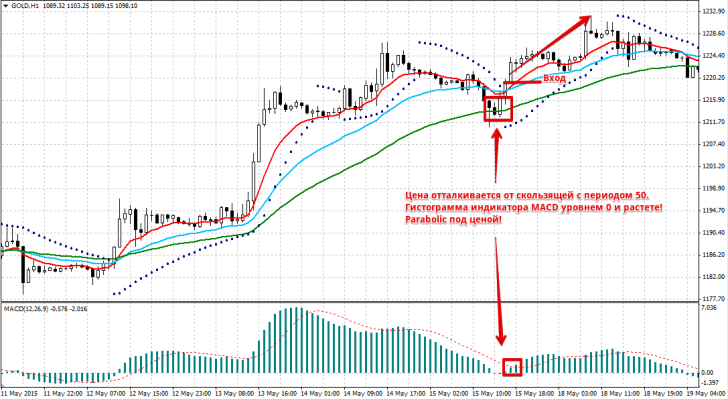
We enter a sell position while simultaneously meeting the following conditions:
1. A moving average with a period of 10 intercepts moving averages with a period of 25 and 50 from top to bottom. (The red line crosses the blue and green lines from top to bottom).
2. The Parabolic indicator point is above the price.
3. The histogram of the MACD indicator is below level 0.
Entry into a position occurs strictly on a closed bar. An example of entering a sell position is shown in the picture below:
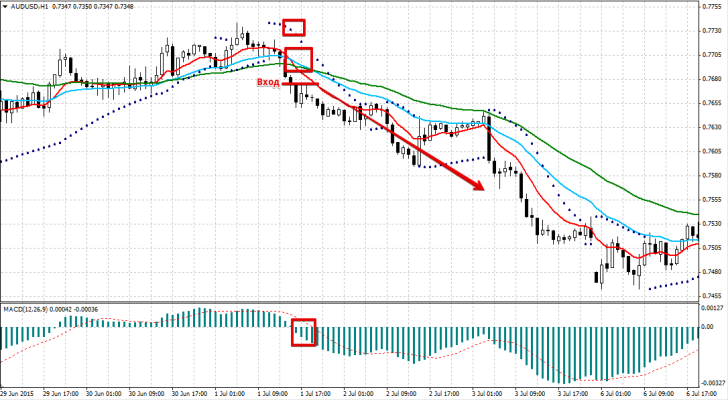
If you missed the main signal or simply want to add to a sell position, then an additional signal occurs when:
1. The price approached the moving average with a period of 50 and pushed away from it.
2. The MACD indicator is below level 0, and its bars are falling (the current histogram bar is lower than the previous one).
3. Parabolic indicator point above the price.
An example of topping up according to a buying trend is shown in the picture below:
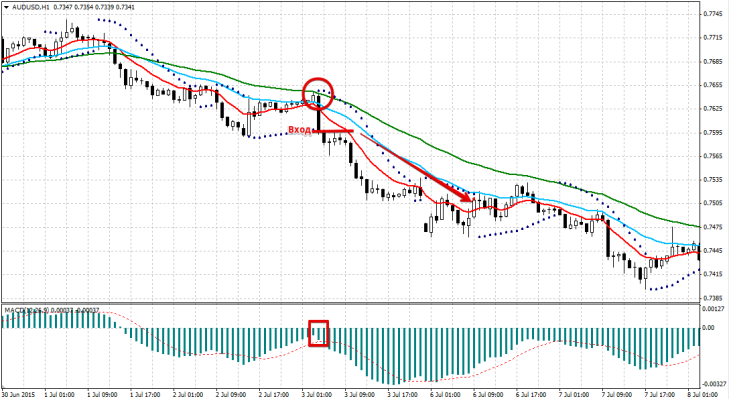
Proper compliance with risks and a correctly set stop order are no less important than the entry point itself. In the stop strategy, the order must be placed opposite the Parabolic indicator point, which is located above the candlestick by which you enter the position.
You can also set your stop order at local minimums and maximums. Exit from a buy position occurs if the moving average with a period of 10 crosses the moving average with a period of 25 from top to bottom. We exit a sell position if the moving average with a period of 10 crosses the moving average with a period of 25 from the bottom up. The profit is usually set at 2 times the stop, but as the price moves, the stop is moved along parabolic points, so the profit has to be moved higher. An example is shown in the picture below:
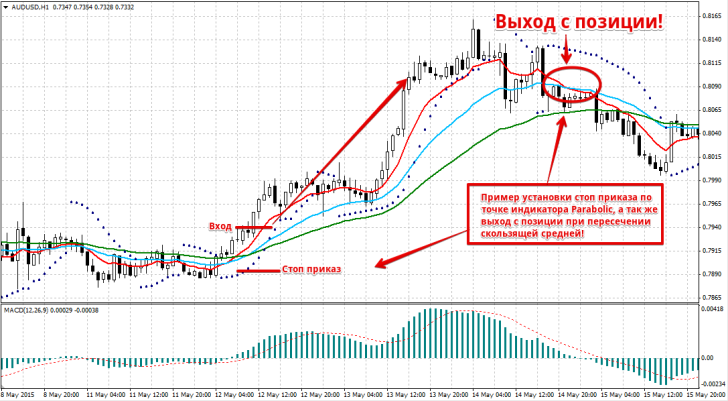 In conclusion, I can say that this is not just a trading strategy, but a system that has entry rules, both for main signals and additional ones. Any trend strategy has a vulnerability - flat , however, one profitable position on it can close at least two stop orders.
In conclusion, I can say that this is not just a trading strategy, but a system that has entry rules, both for main signals and additional ones. Any trend strategy has a vulnerability - flat , however, one profitable position on it can close at least two stop orders.

